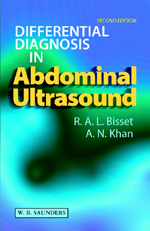|
|
|
| |
 |
|
|

|
 推薦指數:
推薦指數:





|
|
- 內容介紹
|
Differential Diagnosis in Abdominal Ultrasound, 2nd Edition
RA.L. Bisset MB, BS, FRCR, Consultant Radiologist, Department of Radiology, North Manchester General Hospital, Manchester, UK
ISBN 0702026522 · Paperback · 576 Pages
Saunders · Published 2002
This practical reference combines an extensive list of differential diagnoses with concise descriptions of important clinical and sonographic features most commonly found in abdominal and pelvic ultrasound studies. By combining gamuts with a concise description of important clinical and sonographic features it is designed to help the practitioner quickly and accurately make a definite diagnosis. Each chapter contains a brief overview of a specific region, in which anatomy, normal measurements, and tips for performing an accurate, complete study are described. Pathologic processes typically identified with ultrasound are discussed in short paragraphs providing information on causes and sonographic appearance. Most importantly, the authors explain the rationale for obtaining certain scans and why specific features must be identified for a complete and useful examination.
Features
Ultrasound features are considered in conjunction with a full clinical history and physical exam. Shortens the list of possible diagnoses and guides the clinician to a firm diagnosis or to further relevant investigations.
Sonographic features are well described and all important normal measurements are included. Will assist the clinician in diagnostic test selection and in interpreting the significance of findings in ultrasound reports.
Comprehensive list of differential diagnosis accompanied by a concise text. Provides the reader with the core knowledge necessary for an accurate and reliable appraisal of a sonogram.
Practical format. Can be used by the practitioner as a handy quick reference in day-to-day work or by the trainee as an ideal study guide preparing for board exams.
The gamuts are well formulated by introducing the most common causes first. Saves the reader valuable time by weighting the causes towards clinical importance and frequency.
|
|
|

